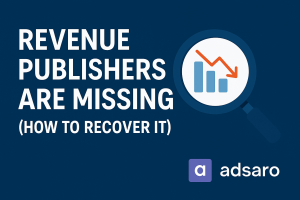First-impression ads are a crucial component of any successful digital marketing campaign. In a world where attention spans are shrinking, capturing user interest within seconds can make the difference between a lost opportunity and a converted customer. This blog explores why they matter more than you think, their impact on consumer behavior, and best practices for leveraging them effectively.
What Are First-Impression Ads?
First-impression ads refer to the very first advertisement a user encounters within a digital environment. These could be:
- Banner ads on a webpage
- Video pre-roll ads
- Sponsored social media posts
- Native ads on content platforms
The effectiveness of these ads hinges on visual appeal, relevance, and strategic placement.
The Science Behind First-Impression Ads
Research shows that users form an opinion about an ad in as little as 50 milliseconds. This rapid assessment determines whether they engage with the ad or ignore it. These ads leverage psychological principles such as:
- The Primacy Effect – Users remember and trust the first piece of information they see.
- Cognitive Bias – People tend to favor brands they recognize from previous exposure.
- Emotional Triggers – Ads that evoke emotions (happiness, curiosity, or urgency) drive higher engagement.
Why First-Impression Ads Matter More Than You Think
| 1. Higher Engagement Rates | A well-designed first-impression ad can generate significantly higher click-through rates (CTR) compared to subsequent ads. Users are more likely to interact with an ad that captures their attention immediately. |
| 2. Brand Recall and Recognition | First-impression ads play a vital role in increasing brand recall. When users repeatedly encounter the same brand in their browsing journey, familiarity breeds trust, which can lead to conversions. |
| 3. Reduced Ad Fatigue | Users are bombarded with thousands of ads daily, leading to ad fatigue. First-impression ads cut through the noise by presenting a fresh, compelling message that resonates with the audience. |
| 4. Stronger Influence on Purchasing Decisions | Studies indicate that first-impression ads influence purchase intent. When users see a brand early in their decision-making process, they are more likely to choose it over competitors. |
| 5. Optimized Ad Spend Efficiency | Advertisers who prioritize first-impression ads see better ROI. Rather than relying on repetitive remarketing, brands can make a lasting impact from the first interaction, reducing wasted ad spend. |
Best Practices
| 1. Prioritize High-Impact Visuals | Ensure your ads feature eye-catching imagery, vibrant colors, and a clean design to grab attention instantly. |
| 2. Craft Compelling Ad Copy | Use concise, persuasive language. Headlines should be attention-grabbing, and CTAs should be clear and action-driven. |
| 3. Optimize for Mobile Users | With over 60% of digital ad impressions coming from mobile devices, ensure first-impression ads are mobile-friendly and responsive. |
| 4. Leverage Personalization | Personalized ads based on user behavior and preferences increase engagement and conversion rates. |
| 5. Test and Analyze Performance | Regular A/B testing helps determine which first-impression ads perform best, allowing for data-driven optimizations. |
Case Studies
1. Nike – Utilizing emotionally driven video ads that immediately capture user interest.
2. Coca-Cola – Creating memorable visual storytelling through vibrant banner ads.
3. Amazon – Leveraging AI-driven personalized ads to enhance user experience.
4. Spotify – Engaging users with interactive audio ads on its streaming platform.
5. Airbnb – Using lifestyle-driven imagery to create instant emotional connections with viewers.
Conclusion
First-impression ads are more than just a fleeting moment in a user’s digital experience. They shape brand perception, drive engagement, and influence purchasing decisions. By crafting visually compelling, well-targeted ads, brands can maximize their marketing impact and enhance ROI. Investing in high-quality ads ensures that your brand stands out in a competitive digital landscape.
By implementing these best practices, advertisers can ensure that their ads leave a lasting and meaningful impact on their audience.








Leave a Reply